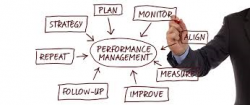Driving Business Performance with Analytics
 Have you investigated ways to improve your company’s operational performance on more than one occasion, but been challenged with having the right data and determining the right measurements?
Have you investigated ways to improve your company’s operational performance on more than one occasion, but been challenged with having the right data and determining the right measurements?
You’re certainly not alone if you answered YES.
Creating the best analytics is a rigorous task that requires special study of the “hierarchy” of performance variables that are present throughout your business. While many variables affect performance, we have found over time that analytics created around performance- or profit-generating processes is a good way to begin. Then cascading these measurements down through the enterprise helps to ensure concentric goals and objectives.
I would nominate the following key processes to model your analytical measurements around:
- Supply Management
- Revenue Management
- Customer Management
- Asset Optimization
Individually, each is important; but collectively from the top to the bottom of the enterprise they are critical and tell a great deal of the performance story.
Supply management analytics range from the basic variance elimination in supplier management such as fill rates, PPV, and on-time delivery to reducing your company’s risk profile by measuring supplier variability and agility with a focus on increasing collaboration and synchronization after reducing lead times. From a forward-looking perspective, launching a project to identify and aggregate spend across a variety of sourcing functions can also produce a great deal of savings. Again, the first task at hand is analytical in nature to measure spend after grouping, reclassification and rationalization.
Revenue management is a variety of processes that include your company’s ability to generate (drive) and manage (match supply and demand) revenue. The sales and operations planning process is perhaps the most important area to center attention on, then cascading down into demand forecast accuracy and demand volatility reduction. Part of the revenue management challenge is to monitor processes that can shape or drive demand such as promotional activities and their effectiveness in lifting sales along with overall price management. Continuously doing margin analysis by looking at cost of goods sold by product and local discounting practices can provide an early warning signal as to how revenue will be flowing downstream. Of course, all the analytics surrounding sales management are a given and an absolute necessity, such as sales by source vs. plan.
Customer management is the other side of the equation opposite supplier management with many of the same measurement characteristics on the order fulfillment side, such as fill rates, on-time delivery and stock-outs. Additionally, you can look at service level achievement by measuring returns, reason codes and trends. While these are closely linked to order fulfillment, they can help you uncover and mitigate product issues early on as they emerge. Other key measurements surrounding customer profitability can enable you to assess customer value and potential, while also indicating potential downstream attrition. Complimenting this is the analysis of customer buying patterns to help identify cross-selling opportunities across product lines and customer segments.
Asset optimization is the most commonly measured process since it is largely financial in nature and well understood by stakeholders. The difference between Performance Management and conventional financial asset measurements is the dynamic nature of the performance management variables. Examples are at the SKU level, such as inventory planning and analysis, to continuously balance your organization’s mix of inventory investment. ABC product stratification or gross margin return on investment can be used to measure inventory financial leverage. Additional key financial measurements are cash-to-cash cycle time, which includes days sales outstanding (DSO) and days purchasing outstanding (DPO) to assess the velocity of generating margin. Finally, from a non-financial perspective, measuring capacity utilization from manufacturing to distribution provides warning signs of pending upstream failures. The challenge is to accurately measure at a detailed level, and even predict failure, in part by using some conventional software techniques.
Business performance analytics are not new, but what is new is the crosslinking of low-level dynamic performance variables to form an early warning picture of what could happen if corrective actions are not taken quickly. We’ve used these type of predictive analytics in the demand planning world for many years, and now it’s time to extend their use across other processes in the complex, global enterprise.